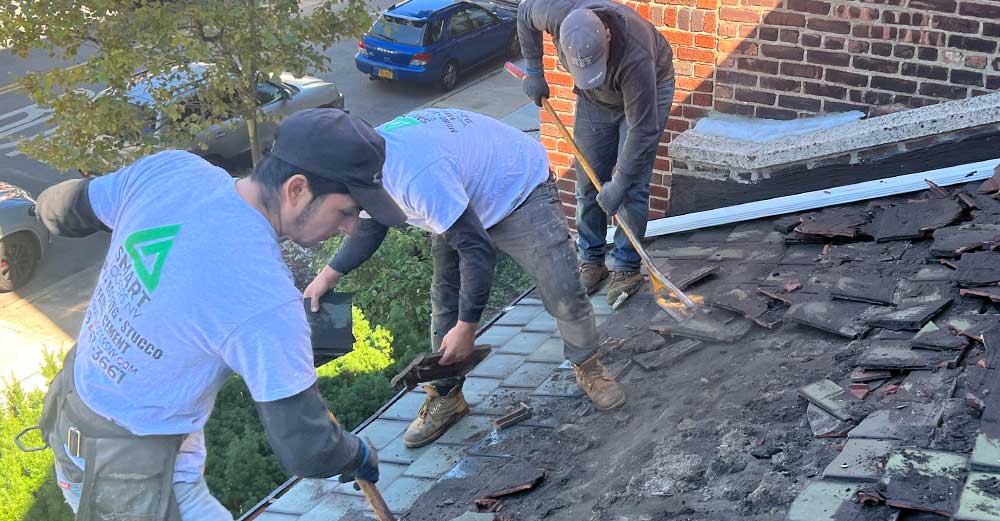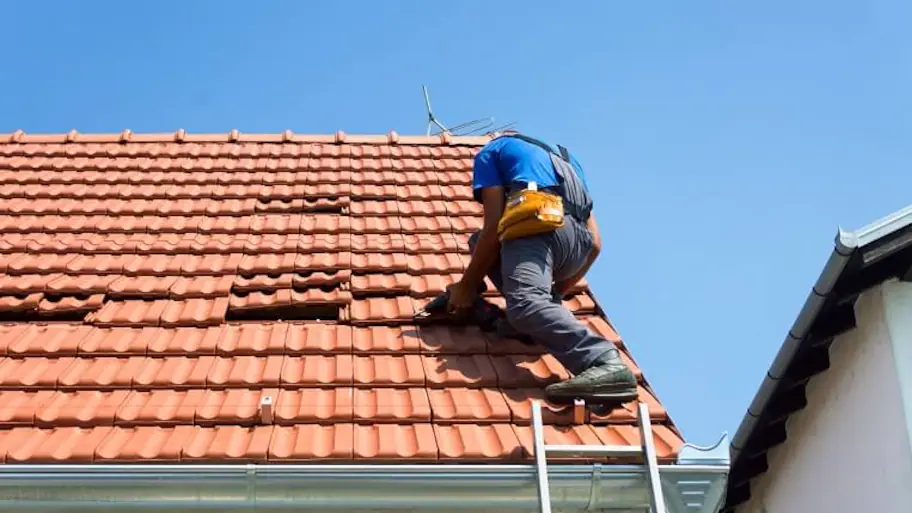Comprehending the Various Kinds Of Roof Coverings: A Comprehensive Guide for Homeowners
In the world of homeownership, choosing the ideal roof style is a choice that brings substantial effects for both performance and aesthetic appeal. With a selection of alternatives-- varying from the traditional gable to the contemporary level-- each type provides unique benefits and obstacles that must align with the homeowner's details requirements and ecological factors to consider. Understanding these differences not just help in making an informed selection but likewise influences long-term upkeep and energy performance. As we discover the complexities of different roof covering kinds, it becomes obvious that a person dimension does not fit all; the best choice might surprise you.
Saddleback Roof
Gable roof coverings, identified by their triangular shape, are among one of the most prominent roof styles due to their simplicity and effectiveness in dropping water and snow. This design features two sloping sides that fulfill at a ridge, enabling for efficient drain and reducing the danger of water buildup. The steep pitch commonly related to gable roof coverings boosts their capacity to deal with heavy rainfall, making them appropriate for various climates.
Along with their practical benefits, saddleback roofs offer aesthetic versatility. They can be adjusted to different architectural designs, from typical to modern-day homes. The design can additionally fit extra features such as dormer windows, which boost all-natural light and air flow in the attic space.
Moreover, gable roof coverings offer adequate area for insulation, adding to power performance. House owners can pick from a selection of roofing materials, consisting of asphalt shingles, steel, and tiles, additionally boosting personalization choices.
Despite their benefits, saddleback roofs might require extra support in areas prone to high winds or heavy snowfall. In general, the saddleback roof remains a popular option as a result of its blend of capability, resilience, and aesthetic allure.
Apartment Roofs
Level roofing systems are typically identified for their minimalist style and sensible applications, especially in business and commercial settings (oahu roofing). These roofs feature a almost straight or straight surface area, which enables for easy construction and flexible space usage. While they might do not have the visual appeal of angled roofs, level roofing systems offer many benefits, especially in city environments where optimizing room is essential
One of the key advantages of level roof coverings is their access. Home owners can utilize the roofing system space for various objectives, such as roof gardens, balconies, or photovoltaic panel installations. Additionally, level roof coverings are generally much more cost-effective to preserve and set up contrasted to their sloped counterparts, as they require less products and labor.
Nevertheless, flat roofing systems do existing specific challenges. Correct water drainage is necessary to avoid water pooling, which can bring about leaks and architectural damages. Thus, picking top quality waterproofing materials and regular inspections are crucial for guaranteeing longevity. Usual materials used for level roofs consist of built-up roof covering (BUR), modified bitumen, and single-ply membrane layers, each offering unique benefits. Generally, flat roofs offer as a practical and adaptable option for numerous house owners and businesses alike.
Hip Roof Coverings
Hip roof coverings are defined by their sloped sides that assemble on top, developing a ridge. This design stands out from gable roof coverings, as all 4 sides of a hip roofing slope downwards towards the wall surfaces, offering a more stable structure. The angle of the inclines can vary, enabling flexibility in architectural aesthetic appeals and capability.
Among the main benefits of hip roofing systems is their capability to endure heavy winds and damaging climate condition. The sloped surface areas make it possible for better water drainage, reducing the risk of leaks and water damages. Additionally, hip roofing systems offer enhanced attic room space, which can be used for storage or also exchanged comfortable areas.
Nonetheless, constructing a hip roof can be extra pricey and complex than easier roofing system types, such as gable roofings. The additional material and labor associated with developing the slopes and making certain appropriate structural honesty can cause higher expenses. Despite these downsides, many home owners prefer hip roofs for their sturdiness, aesthetic appeal, and capacity for power performance.
Mansard Roofings
Mansard roofing systems, usually acknowledged by their special four-sided design, feature two inclines on each side, with the reduced slope being steeper than the upper. This architectural style, stemming from France in the 17th century, is not just cosmetically enticing but practical, as it makes best use of the useful room in the read what he said upper floorings of my blog a building. The high lower incline permits more clearance, making it an optimal selection for lofts or attics, which can be exchanged living areas.
Mansard roofing systems are identified by their flexibility, suiting different architectural styles, from typical to modern-day. They can be constructed with various materials, including asphalt roof shingles, slate, or metal, supplying homeowners with a variety of choices to suit their spending plans and preferences. In addition, the style permits the assimilation of dormer home windows, enhancing all-natural light and air flow in the top levels.
Nevertheless, it is necessary to consider the possible downsides. Mansard roof coverings may call for more maintenance due to the intricacy of their design, and their steep inclines can be testing for snow and rain drainage. Generally, mansard roof coverings integrate sophistication with functionality, making them a prominent choice amongst homeowners looking for unique architectural functions.
Lost Roofing Systems
As house owners significantly look for simplicity and capability in their building designs, shed roofs have become a prominent choice. Characterized by a Bonuses solitary sloping airplane, a shed roofing system offers a minimalist aesthetic that matches numerous home designs, from modern to rustic.
One of the main advantages of a shed roof covering is its simple building, which commonly converts to decrease labor and product costs. This style enables for efficient water drain, decreasing the threat of leakages and water damage. Additionally, the vertical incline provides adequate space for skylights, boosting all-natural light within the inside.
Shed roofings likewise provide versatility in terms of usage. They can be efficiently incorporated right into additions, garages, or exterior frameworks like structures and sheds. In addition, this roofing style can accommodate different roof covering materials, including metal, asphalt shingles, and even environment-friendly roofs, straightening with environmentally friendly campaigns.
Nevertheless, it is necessary to take into consideration local climate conditions, as hefty snow loads might demand adjustments to the roof's angle or structure. In general, dropped roofs present a practical and cosmetically pleasing alternative for homeowners seeking to maximize capability without compromising style.
Verdict


Gable roof coverings, characterized by their triangular form, are amongst the most popular roof covering styles due to their simplicity and performance in dropping water and snow. oahu roofing. The steep pitch frequently associated with gable roofings improves their ability to manage heavy precipitation, making them appropriate for numerous climates
While they might do not have the aesthetic appeal of pitched roofing systems, flat roofs use many advantages, especially in urban environments where maximizing space is crucial.
